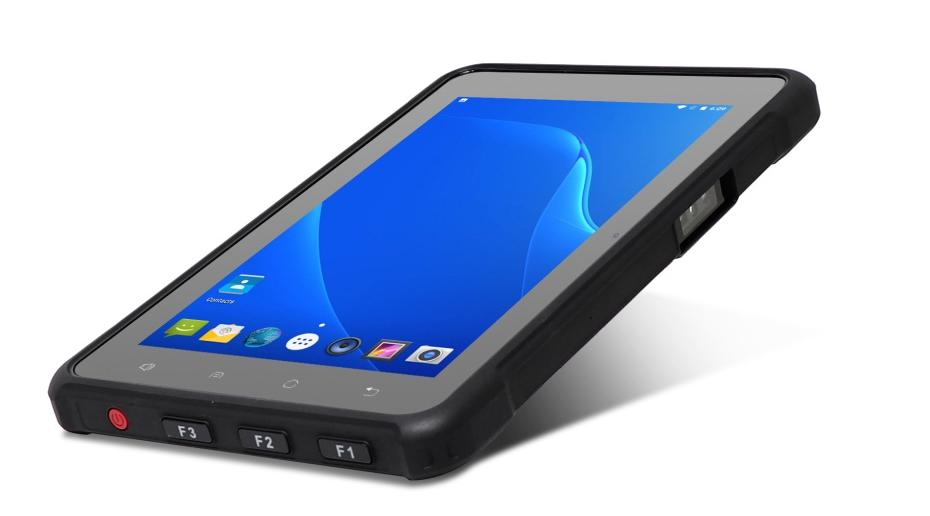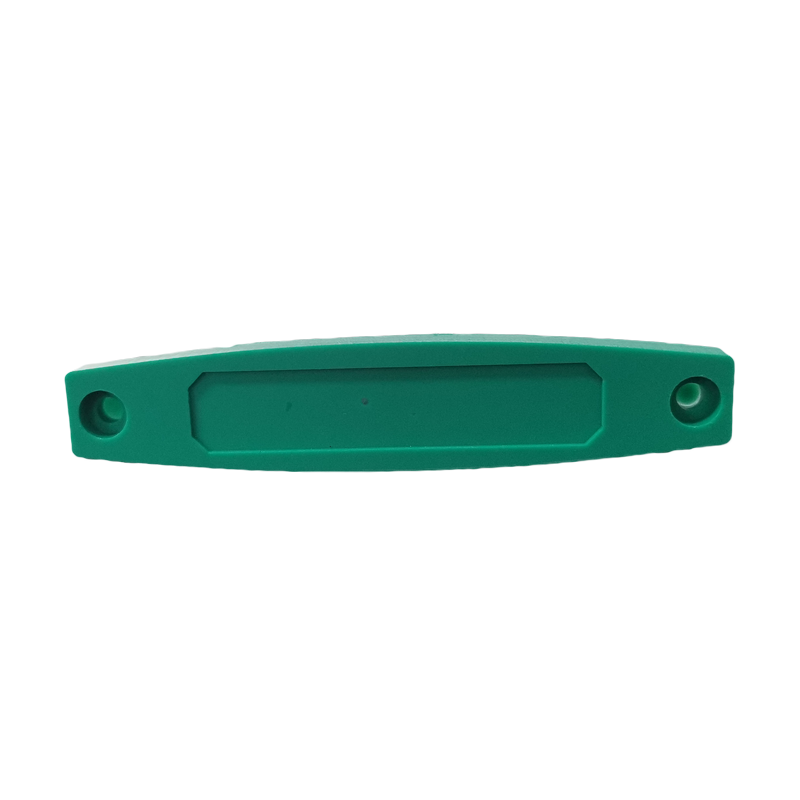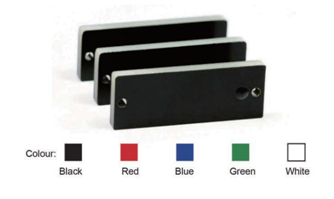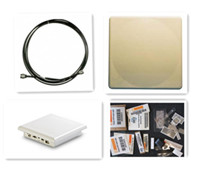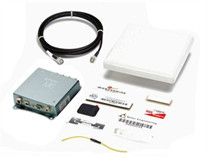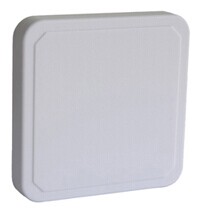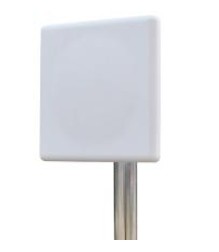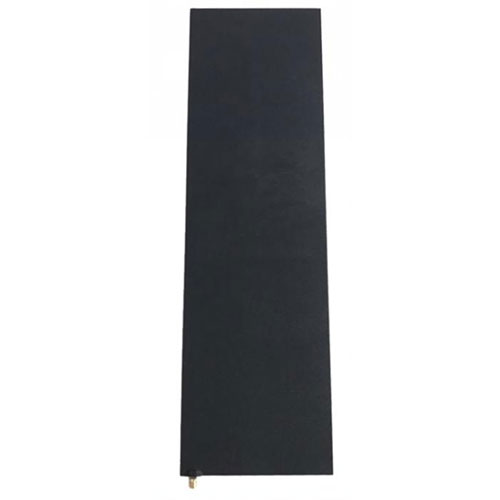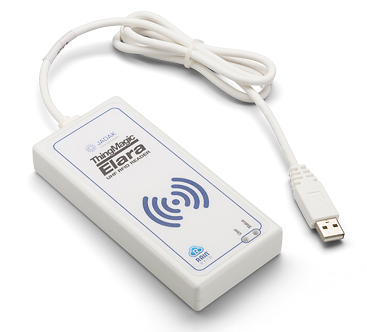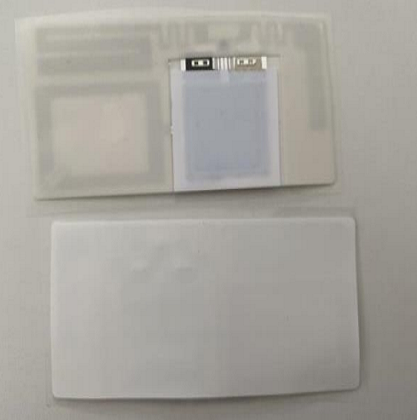外媒:零售业RFID2017年预期将强劲增长
导读:零售业RFID的应用是目前最为广泛的RFID应用。在全球市场来说,零售业RFID今年将会有更为强劲的增长。而前段时间,亚马逊公布了其在西雅图的概念店:Amazon Go(点击了解详情亚马逊“抢劫式”实体超市)让很多RFID专业人士看到了RFID在零售业更为深远的应用。深圳市铨顺宏科技有限公司-ThingMagic中国区总代理,专业的RFID设备和技术服务供应商。www.fuwit.com.cn 400-8331258。
下面请看外媒的研究报告:
RFID技术在2016年取得了巨大的进步。服装行业继续领先RFID应用,约46亿件衣物携带RFID标签。化妆品,电子和酒精以及汽车用品,体育用品和小家电也开始看到RFID的应用。因为标签技术的发展,克服了金属和小体积的技术限制,化妆品和珠宝开始形成了一个蓬勃发展的市场。
看来,2017年将会是RFID爆发的一年。根据研究公司IDTechEx,去年服装行业总共使用46亿张RFID标签,但这也仅占整个服装市场的约10%,留下了很大的增长空间。全球总共有40亿个可用于RFID标记的服装项目,表明服装市场的巨大潜力。
根据咨询公司Kurt Salmon的调查,在收入至少为5亿美元的60家零售商的调查中,73%表示已部署或正在试点RFID。而在2014年的研究中这个数字为34%,市场翻了两倍多。
RFID在零售行业的具有远大前景这一迹象出现在去年。当时梅西百货宣布,其销售的每个产品将在2017年年底携带一个RFID标签。零售商销售的产品中超过60%目前携带RFID标签。
“2017年将是一个有趣的一年,”全球RFID专家Bill Hardgrave说,他是奥本大学哈佛商学院院长。“我们在过去24个月中所看到的行动非常健康,只会加速。RFID将继续被应用,源标签是一个很大的驱动力。
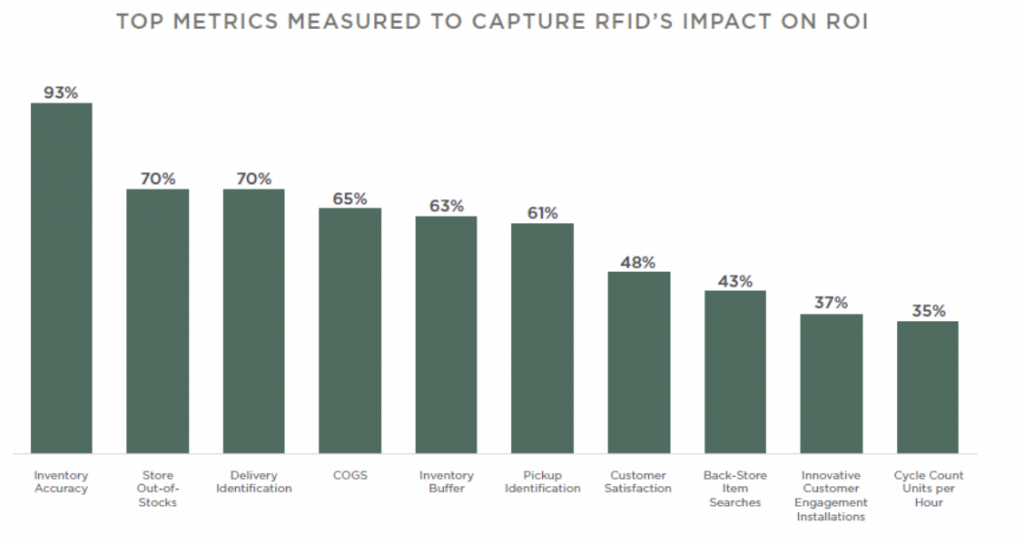
能够反映RFID对投入产出比影响的突出指标
资料来源:Kurt Salmon RFID零售调查,2016
除了梅西百货,马克和斯宾塞和迪卡侬去年都有重大RFID扩展。RFID标签供应商艾利丹尼森,Impinj和恩智浦都表示标签销售强劲增长,艾利丹尼森预计2017年RFID将增长30%,尽管美国的服装市场增长缓慢。
“我们将不仅看到今年的零售商广度增加,也将看到使用深度的增加,”Hardgrave说。“零售商对RFID应用将从一两个小部门,扩大到到其他部门。这一切都是由库存准确度驱动的,零售商意识到,如果不使用RFID,他们不能获得良好的库存准确度。
根据Platt零售研究所的数据,除了将库存准确度从65%提高到98%或更高之外,零售商还从多个方面受益于RFID,该研究报告了对梅西百货的研究结果:
产品显示符合率:RFID的使用大大提高了显示符合率。未显示的产品在4%-6%范围内,而未使用RFID之前,这项数据在30%以上。
客户满意度:整体客户满意度以及客户“查找所有商品”的能力都有提高,女鞋部门(WSD)比梅西百货其他部门的增长更快。这归功于改进的产品显示符合率,以及商店员工可以花费更多的时间与客户沟通和更少的时间进行盘点的事实。
销售额:数据表明,在RFID部署后,全价销售的销售额增加了1%,降价 销售的销售额增长了2.6%。
RFID标签也可以起到防盗的作用,在某些情况下,被动标签取代了硬安全标签。此外,RFID使零售商能够与消费者互动,并了解他们的购买习惯。零售商可以衡量哪些产品进入试衣间并进入结帐台,帮助形成数据驱动的分析,了解为什么某些产品不卖 - 无论是风格,定价还是缺货。
然而,未来才只是开始,当涉及到中断零售概念,如Amazon Go。Amazon Go这家在西雅图的概念店允许客户购买物品而不用排队结账完成物理支付过程。在这种情况下,亚马逊利用传感器融合技术(如RFID,摄像机和其他传感器技术的组合)来使用来自所有来源的数据来解决问题。在这种情况下,RFID仅表示一个数据点。Auburn RFID实验室主任Justin Patton说,未来RFID应用的最终目标是将RFID作为数据采集工具,纳入更广泛的传感器融合解决方案。
“这是零售技术的巨大飞跃,”Patton说。“这个想法是采用很多不同类型的传感器,并在零售商店环境中将它们组合在一起。RFID不是目的地,而是到达那里的车辆。“我们看到的另一件事是在这种应用中,RFID应用的重点已经从存储操作和丢失预防,转移到取消结帐流程。而这是零售商关注客户体验度的结果。
高端时尚零售商Rebecca Minkoff正试图通过使用RFID解决方案在其Soho的旗舰店实现自动结帐。Rebecca Minkoff与技术创业公司QueueHop合作,重新设计了零售店的结帐体验。Rebecca Minkoff在其他使用案例中广泛部署了RFID,包括RFID镜子和试衣间,与消费者互动。SoHo的重新设计的结帐体验将在12月上线。
虽然自助结账技术已经存在于消费者的愿景中很多年,然而时尚零售一直犹豫的原因是高价产品的潜在盗窃风险。QueueHop重新设计了顾客通过手机或者QueueHop自助结算亭进行付款的时刻的标签解锁,提高了安全性。
RFID技术可以让客户有更好的购物体验,同时有效地减少线路,结账话费的时间。Rebecca Minkoff希望重新定义传统的结帐形式,并通过数字化体验将良好的实际购物体验带回到实体零售店,增加实体零售店的销售额。这种解决方案对于不愿意与销售员接触的消费者会有一种更好的体验。
“我不知道是什么样的模式将是最后的解决方案,但我们会看到这些东西在2017年开始涌现,”Hardgrave说。
深圳市铨顺宏科技有限公司作为ThingMagic代理商不仅提供优质的ThingMagic超高频rfid读写模块,ThingMagic超高频rfid读写器,超高频rfid天线,更提供一对一的售后技术支持,配合运营商、集成商将ThingMagic超高频rfid设备应用到rfid服装管理,rfid档案管理,rfid叉车管理,rfid仓储物流管理等领域。
深圳铨顺宏将竭诚为您服务,您可以点击网页右上角的在线客服联系我们,或者拨打咨询热线400-833-1258。
英文原文:
RFID technology made big strides in 2016. The apparel sector continued to lead the charge on tagging, with approximately 4.6 billion clothing items carrying RFID tags. Cosmetics, electronics and alcohol also began to see heavier tag usage, as well as automotive supplies, sporting goods and small appliances. Cosmetics and jewelry represent a burgeoning market, as tag innovation overcomes prior tagging obstacles around metals and small form factors.
It appears that 2017 holds even more promise. According to research firm IDTechEx, the 4.6 billion tags used last year represents only about 10 percent of the entire apparel market, leaving much room for growth. Some estimates put RFID saturation for apparel as low as 4 percent of all items, leaving even more room for expansion. In total, there are 40 billion taggable apparel items, indicating the giant potential for the market.
In a survey of 60 retailers with revenues of at least $500 million, 73 percent said that have deployed or are piloting RFID, according to consulting firm Kurt Salmon. That number is more than double the 34 percent from its 2014 study.
Perhaps the biggest sign of RFID’s promise in retail occurred last year when Macy’s announced that every product it sells will carry an RFID tag by the end of 2017. More than 60 percent of products sold by the retailer currently carry RFID tags.
“2017 is going to be an interesting year,” says Bill Hardgrave, worldwide RFID expert and Dean of the Harbert College of Business at Auburn University. “The action we have seen over the last 24 months, which has been very healthy, is only going to accelerate. Adoption is going to continue and source tagging is a big driver.”

Source: Kurt Salmon RFID in Retail Survey, 2016
Aside from Macy’s, Marks & Spencer and Decathlon both had major RFID expansions last year. RFID tag providers Avery Dennison, Impinj and NXP all report strong growth in tag sales, with Avery Dennison expecting 30 percent growth for RFID in 2016, despite a slow apparel market in the U.S. Late last year Avery saw a Tier 1 client move from pilot into early adoption, as well as a couple of small specialty retailers that moved from business case to pilot or pilot to adoption.
“We’ll not only see the breadth of retailers increase this year, but we’ll also see the depth of the usage increase,” says Hardgrave. “So a retailer that has been dabbling in a category or two, will expand into other departments. It’s all driven by inventory accuracy and retailers realize they can’t get good inventory accuracy without it.”
Aside from increasing inventory accuracy from as low as 65 percent to 98 percent or higher, retailers benefit from RFID in a number of ways, according to the Platt Retail Institute, which outlined the following results from research conducted with Macy’s:
Display Compliance: The use of RFID has substantially improved the rate of display compliance. The rate of items not being displayed was found to be in the 4 to 6 percent range, versus a self-reported rate of 30 percent prior to the implementation of RFID.
Customer Satisfaction: Overall customer satisfaction, as well as the customers’ ability to “find all items,” improved at a faster rate for the Women’s Shoe Department (WSD) than Macy’s stores as a whole. This may be attributable, in part, to improved display compliance rates, as well as the fact that store associates are spending more time with customers and less time taking inventories.
Sales and Markdown Indications: Based on the limited data provided, a definitive link between the use of RFID and unit sales and markdowns in the WSD cannot be established. However, there is an indication that 1 percent more sales were made at full price, and 2.6 percent more sales were made at full price and after the first markdown during the post-RFID deployment period than for the comparable non-deployment period.
RFID tags can also work as a theft deterrent, with passive tags replacing hard security tags in some cases. In addition, RFID allows retailers to engage with consumers and to learn about their buying habits. Retailers can gauge which products move into the fitting room and on to the checkout desk, helping to form data-driven analysis on why some product don’t sell – be it style, pricing or out-of-stocks.
However, the future is just starting to develop when it comes to disrupting retail concepts such as Amazon Go, which allows customers to enter a concept store in Seattle and purchase items without having to physically pay for them. In this case, Amazon utilizes sensor fusion – a combination of technologies like RFID, cameras and other sensor technology – to use data from all sources to solve a problem. In this case, RFID represents just one data point. Justin Patton, Director of the RFID Lab at Auburn, says the end goal is to have RFID accepted as a data capture tool that feeds into broader sensor fusion solutions.
“This is a huge leap forward in retail technology,” says Patton. “The idea is taking a lot of different types of sensors and combining them together in a retail store environment. RFID isn’t a destination, but a vehicle to get there. “Another thing we are seeing is a shift from the focus of RFID being on store operations and loss prevention to the start of eliminating the checkout process. Retailers are heavily focused on the customer experience.”
That’s exactly what high-end fashion retailer Rebecca Minkoff is attempting to do by using an RFID-enabled solution to enable automated checkout at its flagship store in Soho. Rebecca Minkoff has partnered with technology start-up QueueHop to re-imagine the retail store checkout experience. Rebecca Minkoff has widely deployed RFID in other use cases, including RFID mirrors and fitting rooms to engage with consumers. The redesigned checkout experience in SoHo went live in December.
While self-checkout technology has existed for years across the consumer landscape (i.e. grocery stores), fashion retail has historically been hesitant to embrace the technology because of potential theft implications on higher ticketed items. QueueHop re-engineered the security tag to unlock the moment a payment is made via a shopper’s phone or a QueueHop self-checkout kiosk.
The technology empowers customers to be in control of their shopping experience, while effectively reducing lines, cart abandonment and the time associates need to spend at checkout. Rebecca Minkoff looks to redefine the traditional checkout format and bring back foot traffic to physical retail with the digitized experience. The solution is another way for a consumer, who may be intimidated by a shopping environment or may just not want to engage with store staff, to be in control of their shopping experience.
“I don’t know if which model will be the go-to solution, but we’ll see those kinds of things pop up in 2017,” says Hardgrave.
同类文章排行
- 邀请函|铨顺宏科技诚邀您莅临深圳高交会(CHTF 2024)
- 2023《射频识别(RFID)技术与标准化蓝皮书》正式发布
- 2023年第五届物联网产业发展与技术合作研讨会
- 热烈祝贺铨顺宏正式担任广州市物流技术与应用协会理事单位
- 铨顺宏携新产品亮相2023第十一届中国西部电子信息博览会!
- 铨顺宏RFID:战备物资定制智能RFID仓储系统软件
- 铨顺宏RFID:试卷管理中RFID技术智能系统发挥着什么样的作用
- 铨顺宏RFID:图书馆系统服务项目的科学研究
- RFID叉车仓储管理应用
- 铨顺宏RFID:建筑工地人员管理解决方案
最新资讯文章
您的浏览历史




